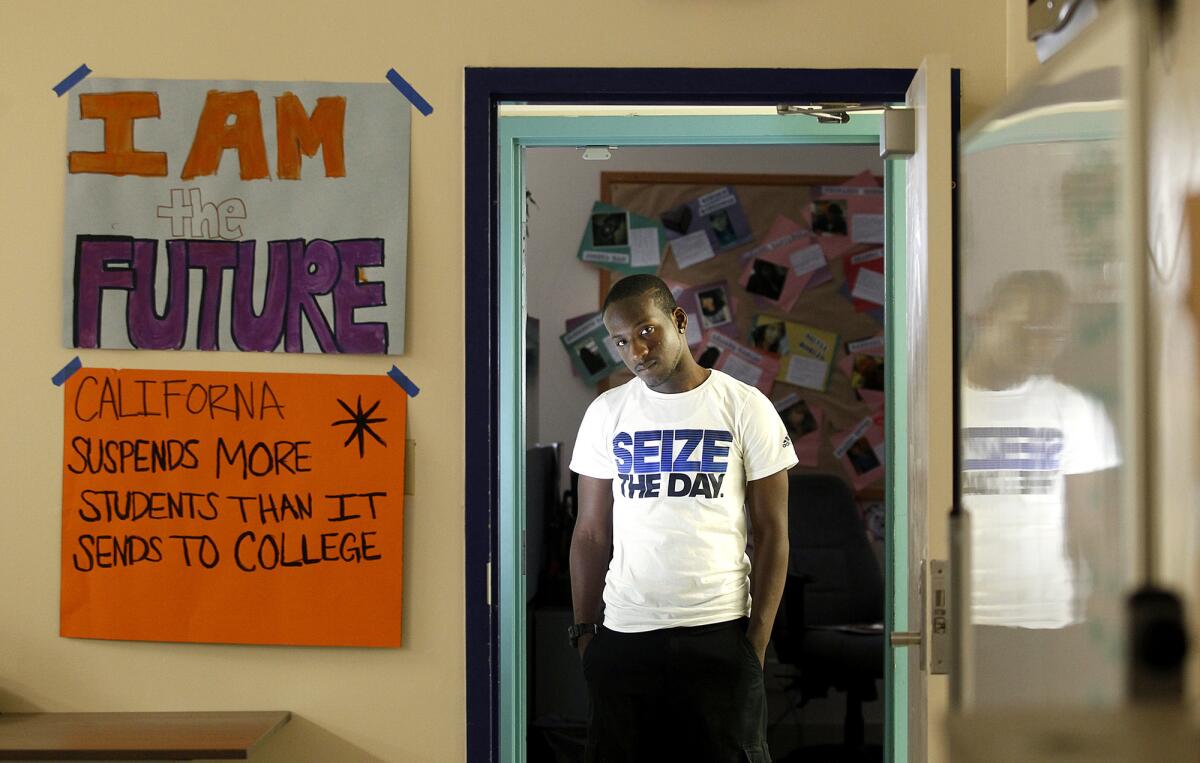Most major California school districts pledge to reduce suspensions

The state’s landmark school finance law has prompted most major California school districts to pledge to reduce student suspensions, hire more counselors and use positive alternatives to deal with misbehavior, according to a study released Wednesday.
The study found that the state’s 2013 law, which overhauled how schools are funded, has made a discernible difference in setting districts’ spending priorities. The law requires districts for the first time to specify goals, actions and funding in eight priority areas -- including academic achievement, access to fundamental educational services and school climate, as measured by student suspension and expulsion rates.
Among the state’s 50 largest school districts, the study found that 92% had set goals to decrease suspensions, 96% had pledged to hire counselors and other support staff and 70% had planned incentive programs to encourage better behavior.
“The law is a very important stride forward because it requires districts to have goals when they didn’t have to have them before,” said Brian Lee, state director of Fight Crime: Invest in Kids California, part of a national anti-crime organization of nearly 5,000 law enforcement leaders and crime victims.
The study comes amid a growing national movement to reduce suspensions, with research showing that kicking students out of school increases their likelihood of dropping out and falling into crime. The state recently reported that suspension and expulsion rates have plunged -- including a 53% decrease in L.A. Unified.
But Lee added there was “a lot of room for improvement” in district efforts, as outlined in their three-year spending plans beginning with 2014-15. While 46 of 50 districts pledged to reduce suspensions, only half had specific numerical targets as required by the law, he said.
Santa Ana Unified, for instance, set a goal for this year to reduce the total number of suspensions by 10% to 6,000, restoring 912 school days. Other districts were more ambiguous and some set no goals at all, including Orange and Stockton Unified.
Only 18% of districts set specific goals for student subgroups, including African Americans and Latinos. Many educational and civil rights groups have pushed districts to monitor the suspension rates among ethnic and racial groups because data show African Americans in particular are disproportionately suspended.
And nearly one-third of districts have not identified the specific source of funding for positive behavior programs or listed the number of counselors, school psychologists and other support staff to be hired, the study found.
L.A. Unified is one of only four school districts found to have specific suspension goals for all students and subgroups, incentive programs for better behavior, at least some dedicated funding and a survey of students, parents and teachers about their school climate. Other districts meeting that mark were San Francisco, and San Juan and Elk Grove in Sacramento County.
But Lee cautioned that goals on paper don’t necessarily result in effective action. The L.A. Unified Board of Education, for instance, passed a measure in 2007 to launch positive behavior programs in every school but relatively few actually did so.
Lee said the state law will force districts to follow through on their plans. They are required, for instance, to file an updated plan by July to report their actual actions and results for the year.
More to Read
Start your day right
Sign up for Essential California for news, features and recommendations from the L.A. Times and beyond in your inbox six days a week.
You may occasionally receive promotional content from the Los Angeles Times.







